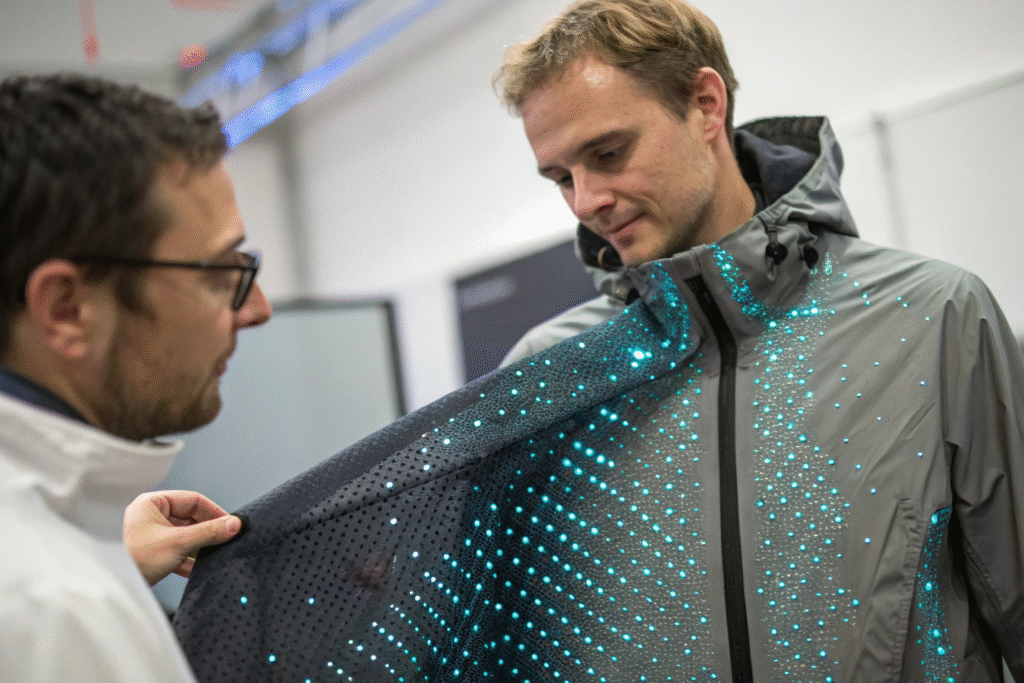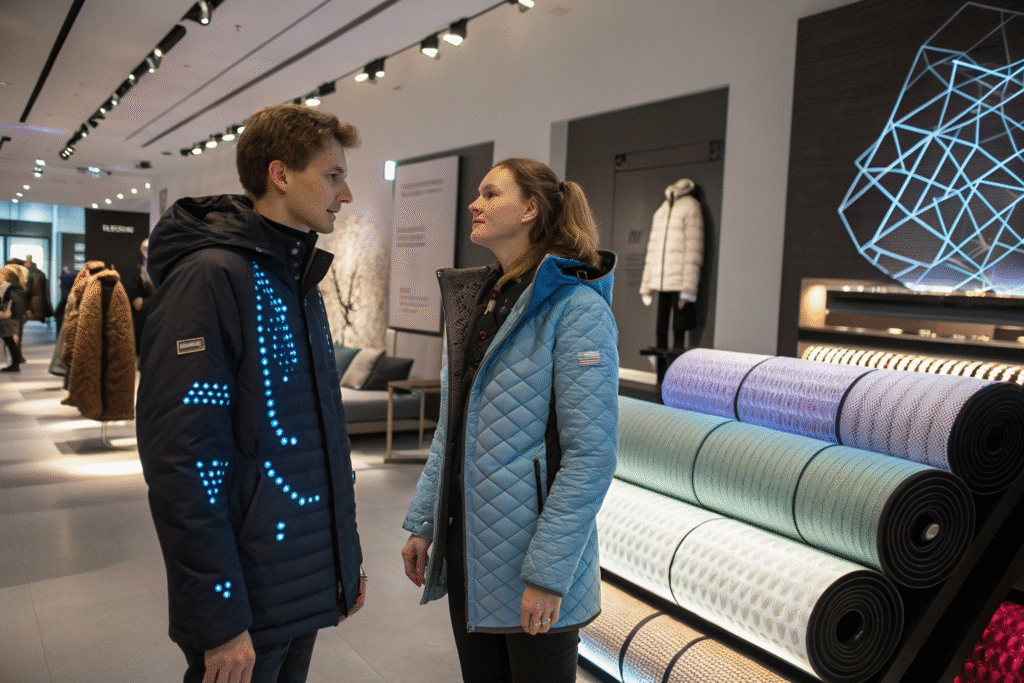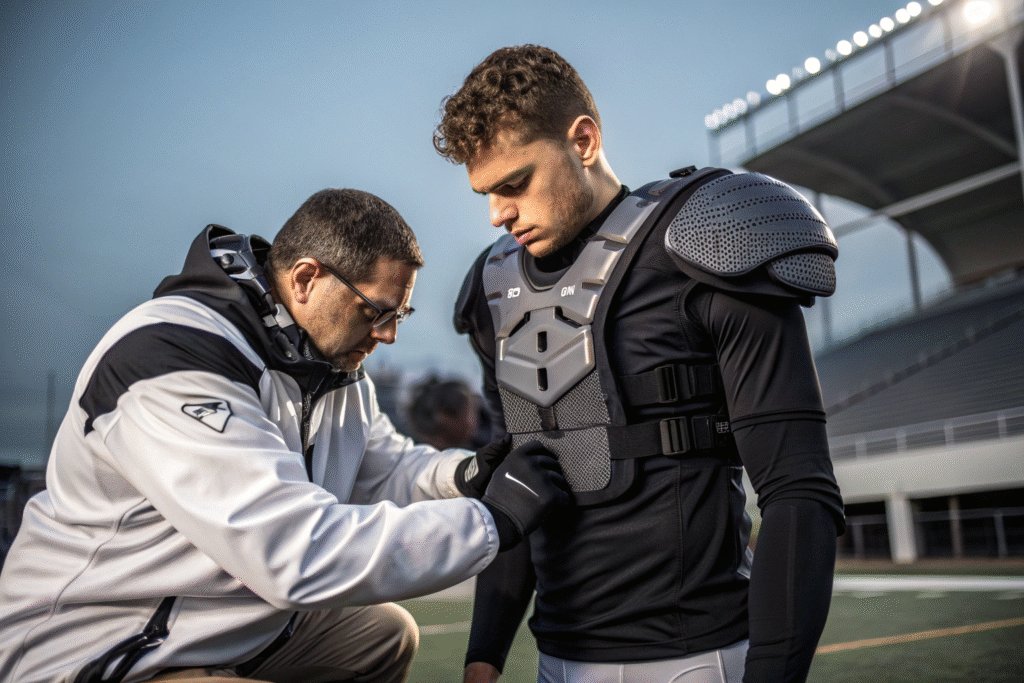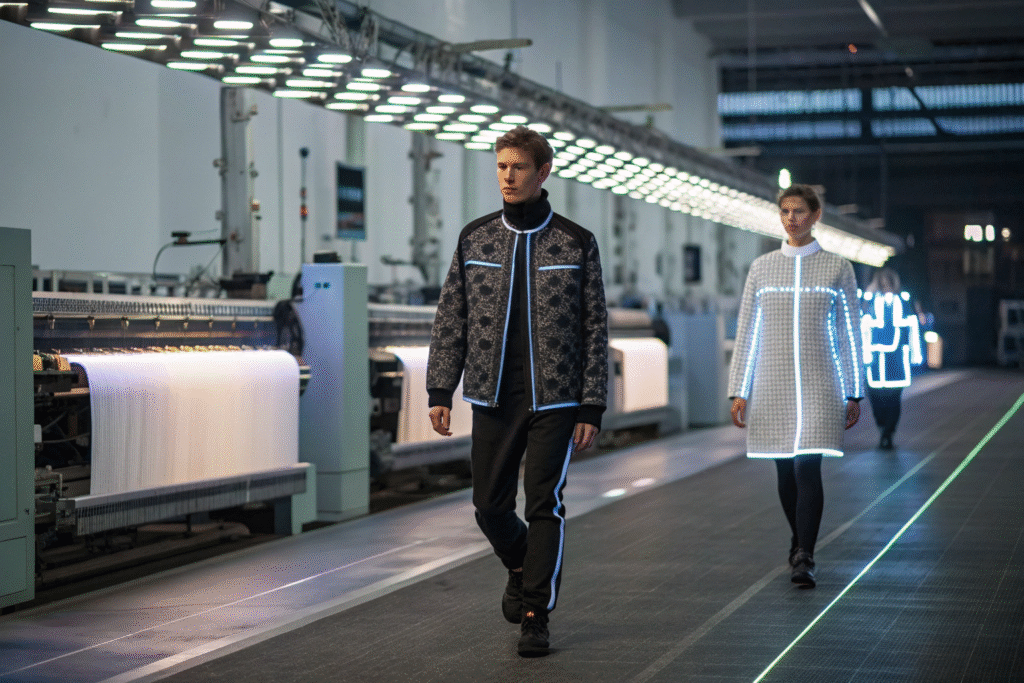In today’s global fabric market, innovation is no longer optional—it is a necessity. Buyers demand materials that are not only stylish and comfortable but also adaptive and functional. Magnetorheological fluid-embedded smart textiles represent one of the most promising innovations in this direction. By embedding special fluids that change behavior under magnetic fields, these fabrics redefine how we think about performance, protection, and fashion.
Magnetorheological fluid-embedded smart textiles change their stiffness and flexibility instantly under a magnetic field, making them ideal for industries ranging from sportswear to medical textiles.
This combination of adaptability, comfort, and performance means that these textiles are not just laboratory experiments—they are commercially viable solutions already gaining traction in Europe, the U.S., and Asia.
What are Magnetorheological Fluid-Embedded Fabrics?
Magnetorheological fluid-embedded fabrics are textiles infused with a suspension that changes its viscosity when exposed to a magnetic field.
They shift from soft to stiff within milliseconds, giving wearers unprecedented adaptability for different environments.

This means that a garment can be flexible and comfortable during regular use but instantly protective under stress or impact.
How Do They Work in Clothing?
The principle is based on the reorientation of microscopic iron particles inside the fluid when a magnetic field is applied. This alignment creates resistance, making the fabric temporarily rigid. For further insights, you can explore smart fabrics in wearables and the National Institute of Standards and Technology, which covers related innovations.
Where Are They Used Today?
Applications range from protective sportswear to adaptive medical braces. These fabrics are especially promising in industries where instant adaptability is life-saving.
Why Are They Relevant for Fashion Buyers?
Buyers today need more than fabrics that just look good—they need textiles that add tangible value to their collections.
MRF-embedded fabrics allow fashion and sportswear brands to offer adaptive clothing lines that respond to customer needs, setting them apart in global markets.

By leveraging MRF technology, buyers can tell a powerful story of innovation and performance that resonates with premium markets.
How Do They Add Value to Product Lines?
Premium buyers often prioritize differentiation and unique features. Much like how Gore-Tex changed outdoor apparel, MRF textiles can transform high-end fashion. These fabrics become a selling point, boosting consumer engagement.
What Do Customers Actually Want?
Consumers increasingly demand wearable tech integration. Adaptive, responsive clothing is not a distant dream—it is becoming mainstream. This makes MRF fabrics the right investment for future-focused brands.
How Do They Improve Performance and Safety?
Performance is at the heart of protective and sportswear textiles. With MRF integration, clothing adapts instantly to impact or changing environments.
These textiles provide safety and functionality beyond what conventional fabrics can offer, making them essential in industries like defense, sports, and healthcare.

This real-time adaptability makes MRF textiles one of the most promising solutions for high-risk applications.
Are They Reliable for Industrial Use?
Research confirms consistent performance in controlled conditions. For validation, visit Journal of Intelligent Material Systems and Structures and Textile Research Journal, both of which highlight these innovations.
Do They Work for Everyday Consumers?
Yes. What started in aerospace and defense is now being translated into commercial markets. Leading brands such as Nike and Adidas are already investing in adaptive technologies, with MRF being a natural next step.
What is the Future of MRF Smart Textiles?
The future of fabrics lies in adaptability. Magnetorheological textiles are at the forefront of this transformation.
They provide a roadmap for brands to integrate personalization, safety, and innovation into everyday clothing.

This technology signals a shift toward truly intelligent fashion.
Will Costs Become Affordable?
As production scales, prices will decrease. This is similar to the path taken by carbon fiber, which was once prohibitively expensive but is now widely used in industries like automotive and sports.
How Can Buyers Stay Ahead?
Working with innovative suppliers ensures early adoption. For an overview of global textile market trends, it is clear that innovation-led fabrics dominate demand. Partnering with experienced manufacturers can help brands get ahead of competitors.
Conclusion
Magnetorheological fluid-embedded smart textiles are more than an innovation—they are a strategic opportunity for buyers who want to stand out. These fabrics deliver adaptability, performance, and safety in ways conventional materials cannot.
If you are ready to explore how to bring smart textiles into your product lines, contact Shanghai Fumao today. Our Business Director Elaine (elaine@fumaoclothing.com) will guide you through tailored solutions to co-create fabrics that define the future of fashion.










